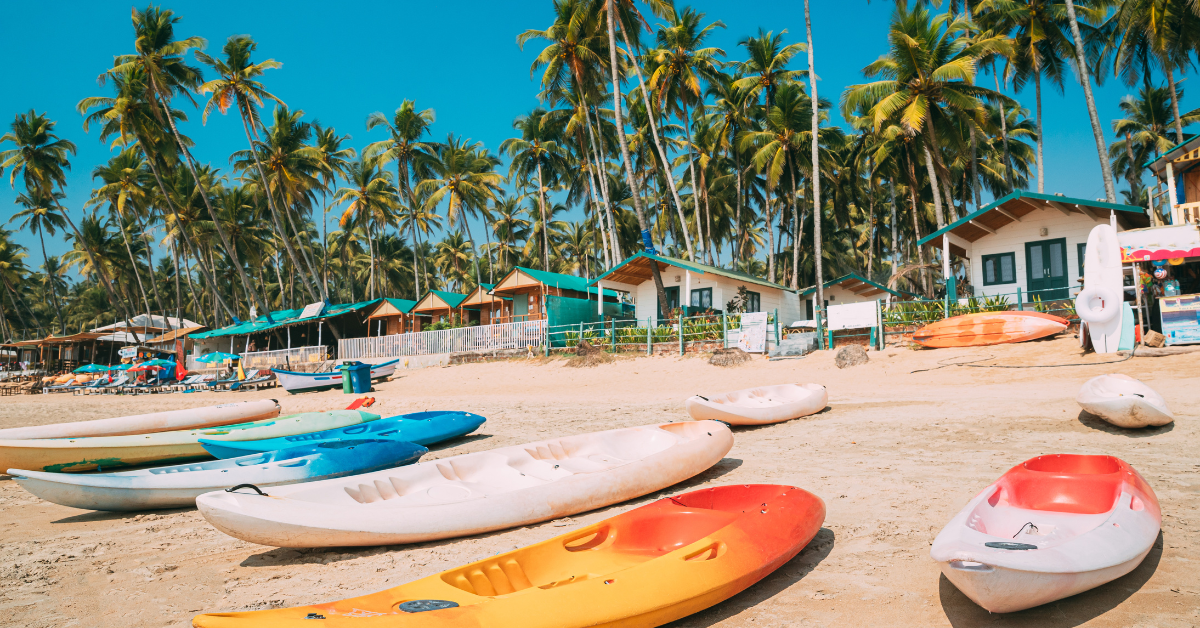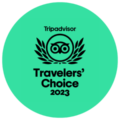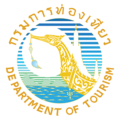Sea Kayaking in Thailand – Top Spots Including Phuket

Thailand’s dramatic coastlines, hidden lagoons, and limestone karst seascapes create some of the world’s most spectacular kayaking environments. From navigating through narrow sea caves into secret emerald lagoons to gliding alongside pristine beaches and colorful coral reefs, Thailand offers paddling experiences that appeal to everyone from complete beginners to seasoned sea kayakers. This comprehensive guide explores the country’s top sea kayaking destinations, with special focus on the waters around Phuket and beyond.

Why Thailand Offers World-Class Sea Kayaking
Before diving into specific locations, it’s worth understanding what makes Thailand such a premier sea kayaking destination:
- Geological Diversity: The dramatic limestone karst formations, particularly along the Andaman coast, create paddling environments unlike anywhere else on earth
- Protected Waters: Many of Thailand’s best kayaking areas lie in sheltered bays or channels, making them accessible to paddlers of various skill levels
- Water Clarity: Crystal-clear waters in many locations allow paddlers to observe marine life directly from their kayaks
- Tropical Climate: Year-round warm water temperatures eliminate the need for wetsuits or specialized cold-water gear
- Rich Ecosystems: Mangrove forests, coral reefs, and diverse marine habitats create varied paddling experiences even within short distances
- Developed Infrastructure: Well-established tour operations and rental facilities make access easy for visitors
- Cultural Dimension: Opportunities to paddle to fishing villages, floating communities, and sacred caves add cultural depth to natural beauty
Phuket and Surroundings: Thailand’s Premier Kayaking Hub
As Thailand’s largest island and a major tourism center, Phuket serves as the ideal base for exploring some of the country’s most spectacular paddling environments.
Phang Nga Bay: The Crown Jewel
Location: Northeast of Phuket in the Andaman Sea Distance from Phuket: 20-45 minutes by boat to various entry points
Undoubtedly Thailand’s most famous kayaking destination, Phang Nga Bay’s distinctive limestone karsts rising vertically from emerald waters create an otherworldly paddling landscape that has graced countless travel magazines and films (most notably appearing in James Bond movies).
What makes this area truly special for kayakers is the network of “hongs” – hidden interior lagoons accessed through sea caves that are often only passable during specific tide conditions. Paddling through a dark limestone tunnel that suddenly opens into a sunlit lagoon completely encircled by towering cliffs creates an unforgettable moment of discovery.
Highlights:
- Hong Island: Features multiple access caves leading to a spectacular central lagoon
- Koh Panak: Home to impressive cave systems and hidden lagoons with resident monkeys
- Koh Hong: Not to be confused with Hong Island, offers one of the bay’s most beautiful interior lagoons
- James Bond Island: The famous landmark from “The Man with the Golden Gun,” though now crowded with tourists
- Floating Muslim Villages: Traditional communities built entirely on stilts over the water
Best Experiences:
- John Gray’s “Hong by Starlight”: The signature tour combining daytime cave exploration with evening krathong (floating offering) ceremony
- Early Morning Expeditions: Departures around 7 AM reach the hongs before most tour boats arrive
- Extended Sea Kayak Camping: Multi-day trips that reach less-visited areas of the bay
When to Go: November to April offers the most reliable conditions, though the bay is relatively protected year-round. Tidal timing is crucial for cave access – experienced operators schedule tours accordingly.
Ao Thalane: Mangrove Majesty
Location: Krabi Province, mainland Distance from Phuket: Approximately 2 hours by road
While technically not in Phuket, Ao Thalane is easily accessible as a day trip and offers Thailand’s most spectacular mangrove kayaking experience. Here, limestone karsts merge with dense mangrove forests to create a maze-like environment of channels and tunnels perfect for exploration by kayak.
Highlights:
- Mangrove Tunnels: Paddle through natural archways formed by intertwined mangrove roots and branches
- Wildlife Observation: Frequent sightings of monkeys, monitor lizards, kingfishers, and sea eagles
- Geological Features: Dramatic limestone cliffs and formations frame the mangrove channels
- Tranquil Atmosphere: Significantly quieter than Phang Nga Bay, especially in early morning
Best Experiences:
- Sunrise Paddles: Early morning tours offer the best wildlife viewing and photography light
- Low Tide Exploration: Reveals the fascinating root structures of the mangrove ecosystem
- Full-Day Adventures: Combine mangrove paddling with nearby beach visits or cave exploration
When to Go: Accessible year-round, with November to April offering more predictable weather. The mangrove channels remain paddleable regardless of sea conditions, making this a good option during monsoon season.

Koh Yao Noi and Koh Yao Yai: The Local Experience
Location: Between Phuket and Krabi in Phang Nga Bay Distance from Phuket: 30-45 minute boat ride
These twin islands offer a more authentic paddling experience away from the main tourist routes. The eastern shores of both islands feature protected bays, small fishing villages, and views of the dramatic Phang Nga Bay formations from a different perspective.
Highlights:
- Traditional Fishing Communities: Observe local life virtually unchanged by tourism
- Secluded Beaches: Discover empty stretches of sand accessible only by kayak
- Rice Paddies Scenery: Unique opportunity to paddle alongside rural island landscapes
- Minimal Tourist Development: Experience the “old Thailand” that has disappeared from more developed areas
Best Experiences:
- Village-to-Village Paddling: Explore the coastline stopping at small communities
- Paradise Koh Yao Expeditions: This resort offers excellent guided kayaking with local knowledge
- Circumnavigation Challenges: Experienced paddlers can attempt full or partial island circumnavigation
When to Go: The eastern shores remain relatively protected even during monsoon season, though November to April offers more reliable conditions.
Phuket’s Local Paddling Options
For those seeking shorter kayaking experiences without boat transfers, Phuket itself offers several worthwhile paddling locations:
Bang Rong Mangroves (East Coast):
- Protected channels through mangrove forests
- Glimpses of traditional fishing methods and local life
- Accessible directly from Bang Rong Pier
Ao Yon Bay (Southeast Coast):
- Sheltered bay with clear water and minimal boat traffic
- Good snorkeling possibilities from your kayak
- Several beachfront operations offering quality rental equipment
Cape Panwa (East Coast):
- Protected waters with views of southern islands
- Opportunity to paddle to nearby Koh Lon island
- Less touristed than western beaches
Ya Nui and Nai Harn (Southwest Coast):
- Beautiful beach launching with interesting rock formations
- Good snorkeling spots accessible by kayak
- Best during high season when seas are calmer
Beyond Phuket: Thailand’s Other Kayaking Paradises
While Phuket provides convenient access to world-class paddling, several other regions in Thailand offer extraordinary sea kayaking worth traveling for.
Ang Thong Marine National Park (Gulf of Thailand)
Location: Near Koh Samui in the Gulf of Thailand Distance from Phuket: Flight to Koh Samui then boat transfer (or overnight ferry)
This archipelago of 42 islands offers dramatically different kayaking from the Andaman coast, with volcanic origins creating unique formations and features. The protected marine park status has preserved pristine environments perfect for paddling exploration.
Highlights:
- Emerald Lake (Thale Nai): A stunning inland saltwater lagoon viewable from above or by kayak
- Cathedral Cave (Tham Bua Bok): Enormous chamber accessible by kayak at certain tide levels
- Varied Island Landscapes: From jungle-covered peaks to sheer cliff faces and white beaches
- Marine Diversity: Excellent snorkeling opportunities directly from your kayak
- Camping Options: Designated camping areas for multi-day adventures
Best Experiences:
- Blue Stars Tours: Specializes in smaller group kayaking focused on less-visited areas
- Multi-Day Camping Expeditions: Several operators offer overnight trips with camping on designated islands
- Combined Hiking-Paddling Days: Many islands feature viewpoint hikes that complement kayaking
When to Go: February to October offers the best conditions, opposite from the Andaman coast. March to September provides the calmest seas and best visibility.
Koh Tarutao Marine National Park (Andaman Coast)
Location: Thailand’s southwestern corner near Malaysian border Distance from Phuket: Full day of travel via boat/road combinations
For paddlers seeking wilderness experiences and encounters with nearly untouched nature, Tarutao National Marine Park represents Thailand’s premier adventure kayaking destination. With minimal infrastructure and strict conservation protection, these islands offer glimpses of the Andaman coast before mass tourism.
Highlights:
- Koh Tarutao: Thailand’s largest protected island, featuring wild beaches, jungle interiors, and fascinating history as a former prison
- Koh Lipe: A small developed island serving as a comfortable base for day paddles
- Koh Adang: Mountain island with waterfalls that can be amazing to paddle beneath in wet season
- Pristine Reefs: Some of Thailand’s healthiest coral systems accessible by kayak
- Wildlife Encounters: Possibilities include sea eagles, hornbills, monkeys, and monitor lizards
Best Experiences:
- Tarutao Boat and Kayak: Offers multi-day supported camping trips around the main island
- Circumnavigation Adventures: Week-long guided expeditions circumnavigating the main island
- Island-Hopping Itineraries: Custom trips visiting multiple islands within the archipelago
When to Go: November to April provides the most reliable paddling conditions, with November-December offering the best balance of good weather and minimal crowds.
Koh Chang Archipelago (Eastern Gulf Coast)
Location: Near Cambodian border on Thailand’s eastern seaboard Distance from Phuket: Requires flight to Bangkok, then road transfer
Often overlooked by international tourists, the Koh Chang archipelago offers excellent paddling with significantly fewer crowds than better-known destinations. The protected waters between islands create ideal conditions for novice paddlers and relaxed exploration.
Highlights:
- Koh Chang’s Eastern Coast: Protected bays and hidden beaches accessible only by kayak
- Koh Wai: Small, undeveloped island with excellent snorkeling from your kayak
- Mangrove Channels: Extensive systems particularly around Salak Phet Bay
- Traditional Fishing Villages: Several communities welcome respectful visitors arriving by kayak
- Diversity of Paddling Environments: From open water crossings to protected lagoons
Best Experiences:
- Kayak Chang: Offers day trips and multi-day expedition options
- Resort-Based Paddling: Several east coast resorts maintain quality kayak fleets
- Bang Bao Bay Exploration: Protected waters perfect for beginners
When to Go: November to May offers optimal conditions, with December to February providing the coolest paddling temperatures (still pleasantly warm by international standards).
Railay and Tonsai (Krabi)
Location: Krabi Province on the Andaman coast Distance from Phuket: 2-3 hours by road/boat combination
This iconic peninsula, accessible only by boat, is world-famous for rock climbing but also offers exceptional paddling opportunities. The dramatic limestone cliffs that attract climbers create a spectacular backdrop for sea kayaking adventures.
Highlights:
- Phra Nang Cave Beach: Paddle to this stunning beach with its famous fertility cave shrine
- Limestone Archways: Natural rock formations perfect for paddling through
- Hidden Beaches: Several small coves accessible only by kayak
- Spectacular Photography: The combination of turquoise water, limestone cliffs, and longtail boats creates postcard-perfect scenes
- Snorkeling Access: Several quality reef areas easily reached by kayak
Best Experiences:
- Sunrise Paddling: Early morning offers the best light and calmest waters
- Half-Day Circumnavigation: Paddling around the entire peninsula reveals dramatically different environments
- Rock Climbing Combinations: Several operators offer combo packages with morning climbing and afternoon paddling
When to Go: November to April provides optimal paddling conditions. The area gets extremely busy during peak season (December-February), so shoulder season visits offer a better experience.

Practical Considerations for Sea Kayaking in Thailand
Best Seasons for Different Regions
Thailand’s coastal areas experience different monsoon patterns, creating distinct paddling seasons:
Andaman Coast (Phuket, Krabi, Phang Nga, Trang):
- Prime Season: November to April
- Shoulder Season: May and October (variable conditions but often good)
- Monsoon Season: June to September (experienced paddlers only, many tours limited)
Gulf Coast (Koh Samui, Ang Thong, Koh Tao):
- Prime Season: February to September
- Shoulder Season: October to November (variable conditions)
- Monsoon Season: November to January (experienced paddlers only)
Eastern Seaboard (Koh Chang, Koh Kood):
- Prime Season: November to May
- Shoulder Season: October and June (variable conditions)
- Monsoon Season: July to September (limited paddling opportunities)
Guided Tours vs. Independent Paddling
Guided Tour Advantages:
- Local knowledge of tide patterns and hidden locations
- Safety support and emergency protocols
- Equipment provided and maintained
- Often includes meals and transfers
- Educational commentary on ecology and culture
Independent Paddling Advantages:
- Schedule flexibility and customized itineraries
- Opportunity to explore at your own pace
- Potential cost savings for experienced paddlers
- More solitary nature experience
- Freedom to linger at preferred locations
Recommendations:
- First-time visitors to any region should start with a guided experience
- Areas with complex tidal patterns (like Phang Nga Bay) strongly warrant guided tours
- Independent paddling works best in protected bays and clearly visible coastlines
- Always inform someone of your intended route and return time when paddling independently
Equipment Considerations
Rental Quality Varies Widely:
- Beach-based rentals typically offer basic sit-on-top recreational kayaks
- Specialized tour operators maintain higher-quality sea touring kayaks
- Check for sun damage, cracks, and functioning hatches before accepting a rental
- Paddle weight and quality significantly impacts your experience
Essential Accessories:
- High-SPF reef-safe sunscreen (the tropical sun is intense even on cloudy days)
- Wide-brimmed hat secured with strap
- Rashguard or lightweight long-sleeved shirt for sun protection
- Polarized sunglasses with strap
- Dry bag for electronics and valuables
- Minimum 2 liters of water per person for day paddles
- Basic first aid kit for independent paddlers
What Tour Operators Typically Provide:
- Kayak and paddle
- PFD (life jacket)
- Basic dry bag
- Lunch and water on full-day tours
- Guide and safety boat for group tours
Recommended Tour Operators by Region
Phuket/Phang Nga Bay:
- John Gray’s Sea Canoe: The original sea cave kayaking company with strong environmental ethics
- Sea Kayak Thailand: Excellent for more advanced paddlers seeking longer expeditions
- Paddle Asia: Offers specialized trips with strong ecological education components
Krabi/Ao Thalane:
- Krabi Kayak: Specialized in the mangrove ecosystem with knowledgeable guides
- Ao Thalane Kayak: Local operator with excellent knowledge of tidal patterns
- Paddle Thailand: Combines kayaking with cultural experiences
Ang Thong Marine Park:
- Blue Stars: Smaller group sizes and more customized itineraries
- Samui Kayak: Locally owned with excellent knowledge of hidden spots
- Sea Kayak Ang Thong: Specializes in multi-day camping expeditions
Koh Chang:
- Kayak Chang: Offers both day trips and multi-day options
- The Spa Koh Chang: Resort-based operation with quality equipment
- Ban Bao Kayaking: Local operator with excellent knowledge of the southern bays
Planning Multi-Destination Paddling Trips
For those wanting to experience several of Thailand’s premier kayaking destinations in one trip, consider these logistically sensible combinations:
Andaman Coast Circuit (2 Weeks):
- Fly into Phuket
- 3-4 days exploring Phang Nga Bay and local Phuket paddling
- Transfer to Krabi for 2-3 days of Ao Thalane and Railay paddling
- Continue to Koh Lanta/Trang for 3-4 days of island exploration
- Return to Phuket via road
Gulf of Thailand Journey (10 Days):
- Fly into Koh Samui
- 3-4 days exploring Ang Thong Marine Park
- Ferry to mainland and transfer to Chumphon
- 3-4 days paddling in the less-visited Chumphon Archipelago
- Return via Bangkok
Eastern Seaboard Exploration (1 Week):
- Fly into Bangkok
- Transfer to Trat province
- 3-4 days paddling around Koh Chang
- 2-3 days exploring Koh Kood’s pristine coastline
- Return via Bangkok
Environmental and Cultural Considerations
Ecological Sensitivity
Thailand’s marine environments face increasing pressure from tourism and development. Responsible paddlers can minimize their impact by:
- Coral Awareness: Avoid dragging kayaks over reef areas or touching coral
- Wildlife Distance: Maintain at least 30 meters from wildlife, especially nesting birds
- Waste Management: Pack out all trash, including organic waste
- Sunscreen Choice: Use only reef-safe sunscreen products
- Quiet Observation: Keep voices low in nature areas to avoid disturbing wildlife
- Stay on Established Routes: In mangrove areas, stick to main channels
Cultural Respect
Many paddling routes pass traditional communities or sacred sites:
- Photography Etiquette: Ask permission before photographing local people or their property
- Appropriate Dress: When visiting villages or temples, cover shoulders and knees despite the heat
- Sacred Caves: Many contain Buddha images or shrines requiring respectful behavior
- Local Livelihoods: Observe fishing equipment or aquaculture operations from a distance
- Purchase Locally: Support communities by buying snacks or drinks when stopping at villages
Beyond the Paddle: Enhancing Your Thai Kayaking Adventure
Complementary Activities
Combine your paddling adventures with these complementary experiences:
- Snorkeling and Freediving: Many premier kayaking locations offer excellent underwater viewing
- Rock Climbing: Railay and Tonsai provide world-class climbing adjacent to kayaking areas
- Thai Cooking Classes: Learn to prepare the flavors you’ll enjoy during your trip
- Traditional Massage: Perfect for recovery after days of paddling
- Cultural Immersion: Temple visits and local markets provide context for your coastal explorations
Accommodations That Support Paddling
Strategic accommodation choices can enhance your paddling experience:
- Paradise Koh Yao: Eco-resort with excellent in-house kayaking program
- The Tubkaak Krabi: Beachfront property with direct launch access to Hong Islands
- Tonsai Bay Resort: Perfect base for combined climbing and paddling
- Koh Jum Beach Villas: Offers quality kayaks for exploring this less-visited island
- The Float House (Kanchanaburi): For freshwater paddling on the River Kwai
Conclusion: Finding Your Perfect Paddling Paradise
Thailand’s remarkable diversity of paddling environments means there’s truly something for everyone—from sheltered bays perfect for first-time kayakers to challenging multi-day expeditions for seasoned paddlers. The country’s combination of dramatic limestone landscapes, crystal-clear waters, rich marine life, and fascinating cultural context creates sea kayaking experiences that rank among the world’s finest.
While Phuket justifiably receives attention as the gateway to iconic Phang Nga Bay, expanding your horizons to include lesser-known destinations like Koh Chang or Tarutao rewards adventurous paddlers with less crowded waters and more authentic experiences. Even within popular areas, early morning departures or slightly off-season visits can transform the experience from touristy to transcendent.
Whether you’re silently gliding through a mangrove tunnel in Ao Thalane, watching monkeys play above a hidden hong in Phang Nga Bay, or beaching your kayak on a deserted island in the Ang Thong archipelago, paddling in Thailand connects you to the country’s natural beauty in a way that few other activities can match. The perspective from sea level, moving at human-powered pace, reveals details and moments impossible to experience from larger boats or land-based viewpoints.
For many visitors, the memory of emerging from a dark limestone cave tunnel into a sunlit lagoon, or the tranquil moment when a colorful longtail boat passes your kayak against a backdrop of karst islands, becomes the defining image of their Thai adventure—a perfect synthesis of the natural wonder, cultural richness, and peaceful beauty that makes Thailand such a beloved destination for travelers worldwide.
Note: Weather patterns, tour operations, and access regulations may change. Always check current conditions and requirements when planning your paddling adventure.










